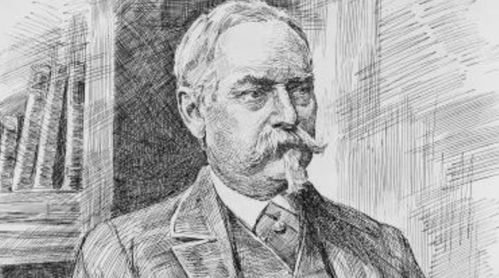‘Hunt’ing Down History, Part 16
By Barbara Emery Moseley
NOTE: This series chronicles the generations of Vernon’s Hunt family, all related to Jonathan Hunt of “Governor Hunt Road” fame. If you’ve missed any installments in this series, you can catch up here!
Severe cold and snow ushered in 1892. Daniel Burnham, construction supervisor at the Columbian Exposition, was living in a construction shanty on the Chicago fair grounds, heated by an immense fireplace. Workmen constructed a moveable enclosure that could be heated, so that “staff” could continue to be applied to the framework of unfinished buildings. Burnham was criticized by both Congress and the local Fair Committee that he was paying wages that were too high. He also built barracks within the park where workers could get three large meals a day and sleep in clean beds in a heated space. They were paid even if kept from working because of injury or illness. It resulted in a loyal work force that gave full measure in its 8-hour day.
Richard Morris Hunt had returned to his New York City office, but kept in touch with architect Charles McKim, who designed the Fair’s Agriculture Building. He visited the shanty and passed on information to Hunt of progress slowly being made.
Lake freighters were unloading wooden crates bearing labels in foreign words and alphabets. Gigantic draft horses drew wagon loads of exhibit materials destined for yet unfinished buildings.
Five trains of 30 cars each delivered steel to the inventor of the “thing” that was to surpass the Eiffel Tower. He was 33-year-old George Washington Gale Ferris. Experienced in railroad and bridge construction, he also knew all of the steel manufacturers, as well as the inspectors who examined each iron part of the giant wheel that would forever bear his name.
Its basic principle was like that of two gigantic bicycle wheels, with rods for spokes, a giant driving chain and sprockets. Hanging between the two were thirty-six cars, each about the size of a Pullman car. Inside each was a refreshment counter, and each was enclosed by plate glass windows and ceilings, allowing passengers to overlook Jackson Park and vast Lake Michigan beyond. Towering to a height of 264 feet, it exceeded the top of the crown of the Statue of Liberty, now already in place for six years, on its pedestal designed by Richard Morris Hunt.
At full capacity, the Big Wheel, as it was called, would propel 2,160 people at a time above the Exposition, so that all the buildings could be viewed. It became the most popular attraction of the Exposition and thousands rode it every day and it was a huge money maker.
After the Exposition closed, the Wheel was moved to the north side of Chicago. However, it was now no longer an attraction and lost money. Coupled with a countrywide Depression, Ferris sold most of his ownership in it.
In the fall of 1896, he and his wife separated. She had been among its first passengers. He moved to a hotel in downtown Pittsburg, PA. On November 17, 1896, he became ill with typhoid fever, dying five days later, at the age of thirty-seven. The request of his wife for his ashes was refused by the undertaker, who claimed the “deceased had closer relatives.”
The achievement of Ferris lives on, however. In the Prater, Vienna’s amusement park, the mysteries of the movie, “The Third Man,” played out near its giant wheel and landmark known as the Riesenrad.
In ushering in 2017 in London, the Queen first oversaw fireworks at Elizabeth Hall of the Tower, around Big ben, displays along the Thames, and finally, fireworks exploded from its famed Ferris wheel, the London Eye.
Where will the New Year take us as we follow Richard Morris Hunt? You may be surprised!

